Linear drawing of geometric bodies. The shape of simple geometric bodies
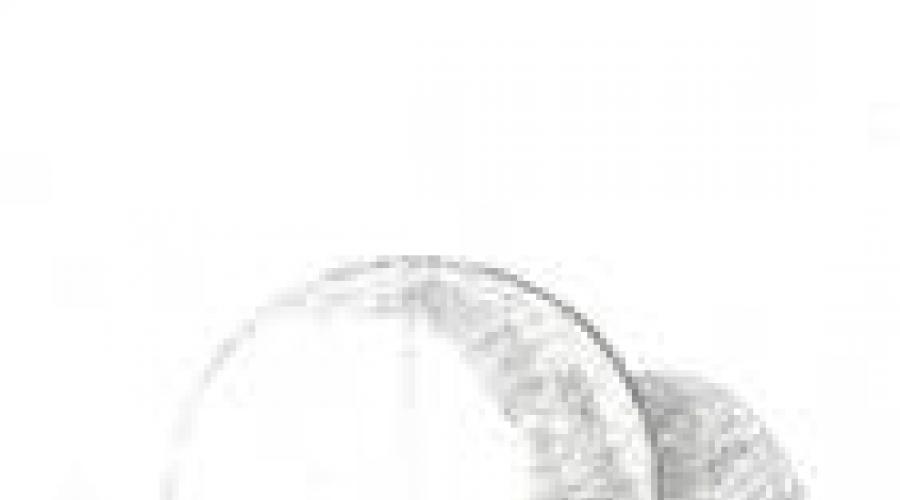
First step. Determining the size of the ball, the fulcrum and the plane on which it is located.

Second phase. Clarification of the diameter of the circle of the ball, determination of the boundaries of light, halftones and own shadows, reflexes and falling shadows.
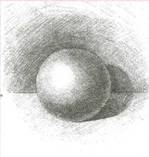
Stage three. Conveying volume with strokes applied in the shape of a ball. It is necessary to pay attention to the smoothness of tonal transitions on a spherical surface.
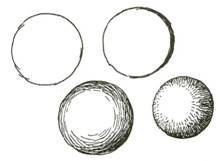
166. Turning a circle into a ball
See how simple a circle can be turned into a ball using various hatching techniques or just thickening the outline on one side.
Words are not as powerful as a few hours of practice in drawing the indicated objects. You can try to depict some simple things and geometric bodies.
When choosing items, take an egg or a solid ball as sphere-like models, a cardboard box can be a cube. Pyramids, cones and prisms are also easy to make from cardboard. But don't limit yourself to white models, try to depict light and dark, matte and shiny objects.
Light, shadow and partial shade play an essential role in the shape of an object. An artist, drawing a living model or still life, often experiments with light sources.
Use them deliberately to the best way convey the features of the shape and texture of objects, try to illuminate them from different sides.

167. Paper tape
The closer the light source, the greater the contrast of light against a dark background or dark against a light background. Subjects fully illuminated from all angles appear flat.
See how the shape is perceived differently depending on the change in direction of the light source.
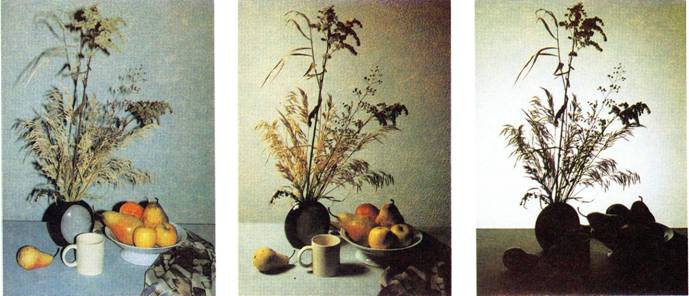
168. Still life under different lighting
Consider Figures 169 a, b. Smooth shading of one tone does not convey the volumetric shape of objects. Overlaying strokes on the shape of objects, taking into account light and shadow, transforms flat silhouettes into three-dimensional things.
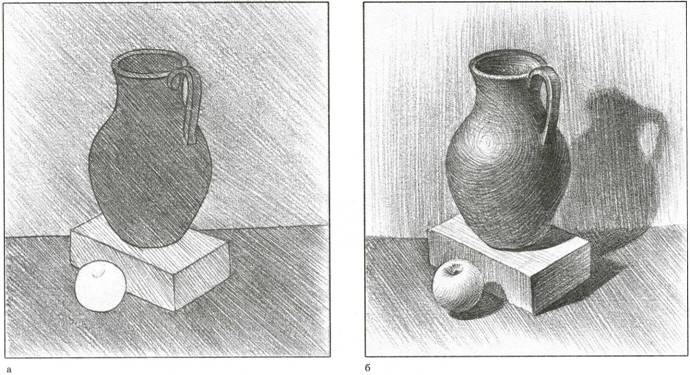
169. Still life: a - planar tonal solution, b - volumetric tonal solution
Any geometric body consists of a shell, that is, an outer surface, and some material that fills it (Fig. 42). Each geometric body has its own shape, which differs in composition, structure and size.
The composition of the shape of a geometric body is a list of the compartments of the surfaces that make it up (Table 4). So, the shape of a rectangular parallelepiped consists of six compartments, surfaces (faces): two of them are the bases of the parallelepiped, and the other four compartments form a closed convex broken surface, called the lateral surface.
Fig. 42. Geometric body: 1 - shell; 2 - compartments of surfaces that form the shell of the body
Form structure geometric body - a shape characteristic that shows the relationship and location of the surface compartments relative to each other (see Fig. 44).
These characteristics are interrelated and to the greatest extent determine the shape of a geometric body and any other object.
By shape, simple geometric bodies are divided into polyhedrons and bodies of revolution.
Plane is a special case of a surface.
Polyhedra - geometric bodies, the shell of which is formed by the compartments of the planes (Fig. 43, a).
Faces - the compartments of the planes that make up the surface (shell) of the polyhedron; edges - line segments along which the faces intersect; vertices are the ends of the ribs.
Rotation bodies - geometric bodies (Fig. 43, b), the shell of which is a surface of revolution (for example, a ball) or consists of a section of the surface of revolution and one (two) section of planes (for example, a cone, a cylinder, etc.).
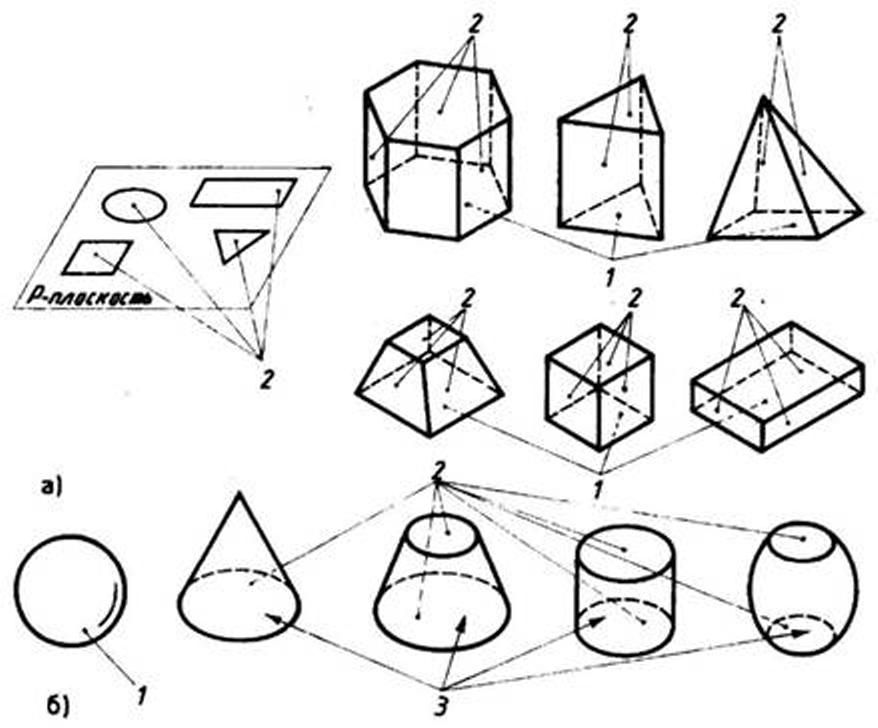
Rice. 43. Polyhedra (a) and bodies of revolution (b): 1 - the shell of a geometric body;
2 - compartments of planes; 3 - compartments of surfaces of revolution
4. Composition of simple geometric bodies

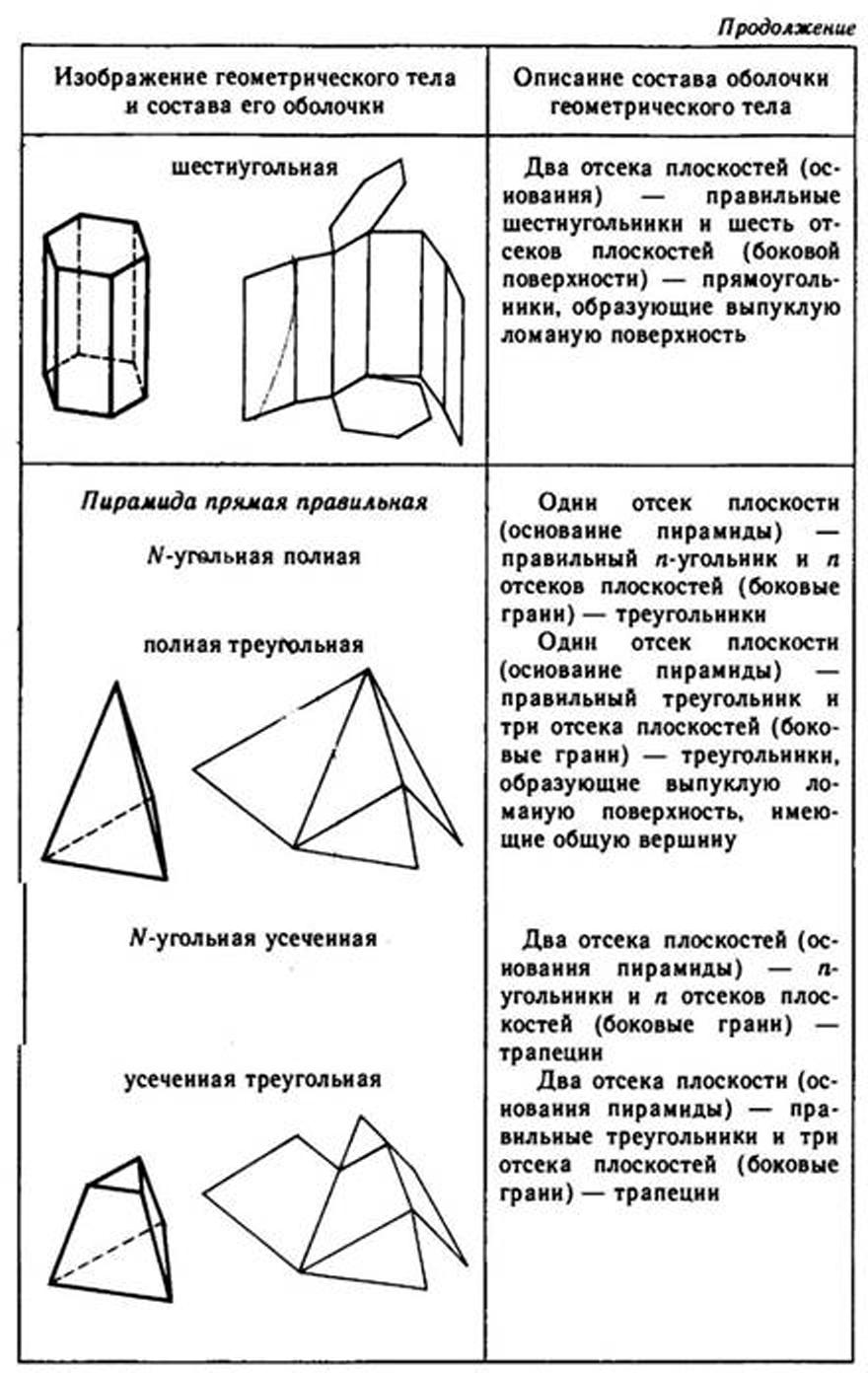

The structure of the form affects appearance geometric body. Let us consider this using the example of straight and inclined cylinders (Fig. 44), the base compartments of which are located in different ways relative to each other.
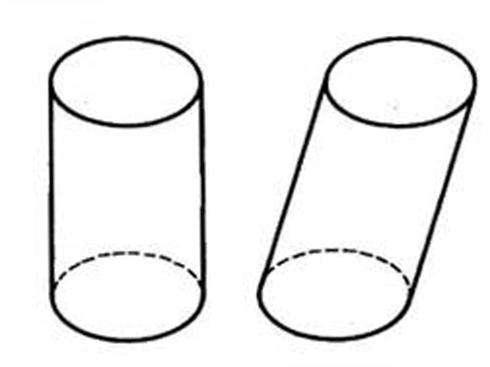
Rice. 44. Structural differences in the shape of the cylinders
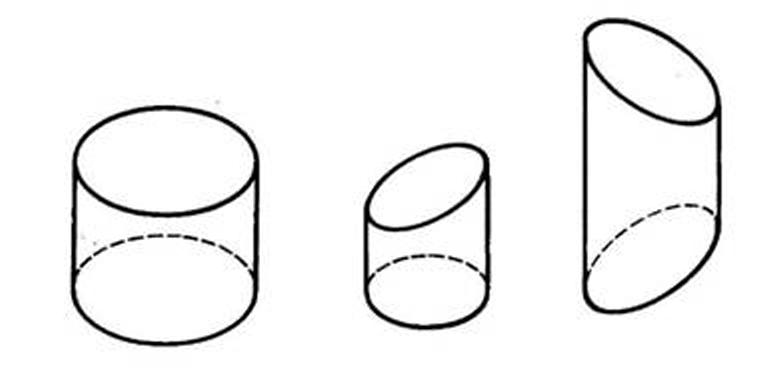
Rice. 45. Changes in the shape of the cylinders
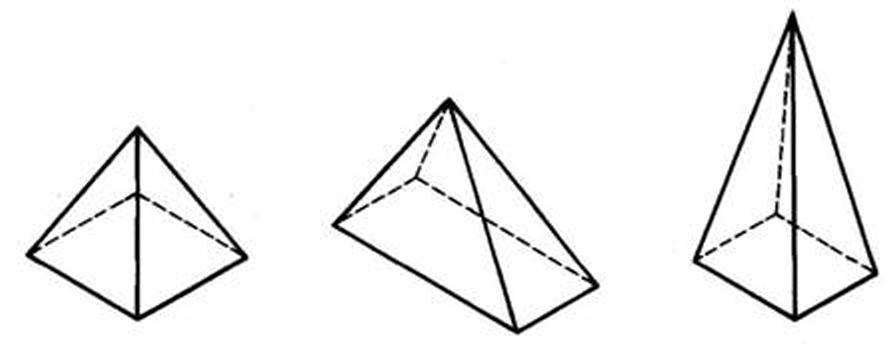
Rice. 46. Quadrangular pyramids of various shapes
Comparing the images of the cylinders in Figure 45, we can conclude that a change in the position of one of the bases leads to a change in the shape of the geometric body.
Changing the height, width, length, diameter of the base, the angle of inclination of the axial, the position of the bases relative to each other significantly affects the shape of geometric bodies. For example consider quadrangular pyramids various shapes (fig. 46).
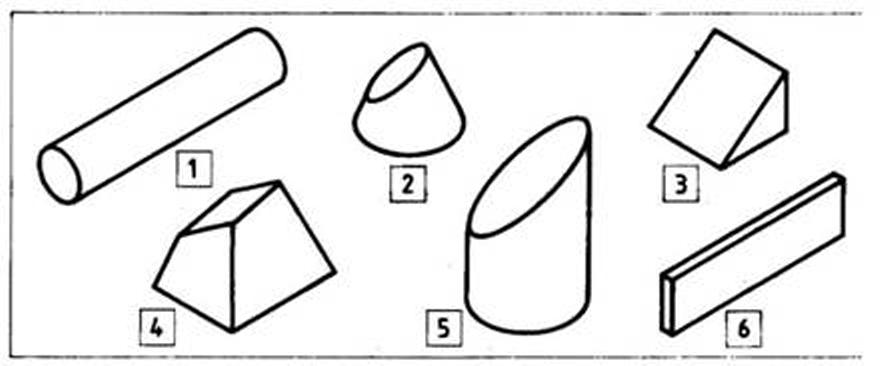
Rice. 47. Geometric solids
Still life with geometric shapes- we know how to draw geometric shapes separately from this pages have also learned to apply eye and skills perspectives to build volumes of shapes. Good. And now we will take two or three figures with you, place it on the object plane and draw a drawing. Chances are when you were doing layouts of geometric shapes, you got them different sizes, various. For still life with geometric objects we will need figures, preferably different in size, so that they do not have the same volume and mass in the composition. It's more interesting and harmonious this way.
I take a ball, a cone and a cube. The cone is a little the same in size with the ball, but it is directed upwards, and if the ball is a static figure, then the cone is dynamic, it is he who sets the format for me - the still life in the sheet will be placed vertically. Well, the third one I will take is a cube. It will be smaller than the other two figures, which will give variety in the "assortment".
Look at the photo on the right. Here is my still life... The object plane and my figures are white, and for this, we will deliberately assume that the wall will also be white. We will do this so that we do not get in the way of additional tones in the picture. Now we will not sketch, but first of all analyze and transfer in the sheet what we already know. And by this time we should know basic laws of drawing... And knowing the basic rules and laws in the drawing, after the construction stage, you can not often resort to the help of nature, since it can give you a lot of reasons to divert your attention from the main thing - we consolidate knowledge.
Also in this fragment of the picture you can see how the shadows will behave. The most active is the falling shadow from the cube. All shadows that will be removed into space will lose their activity, BUT! will still remain shadows. Don't forget this. Now let's take a look at all the work:
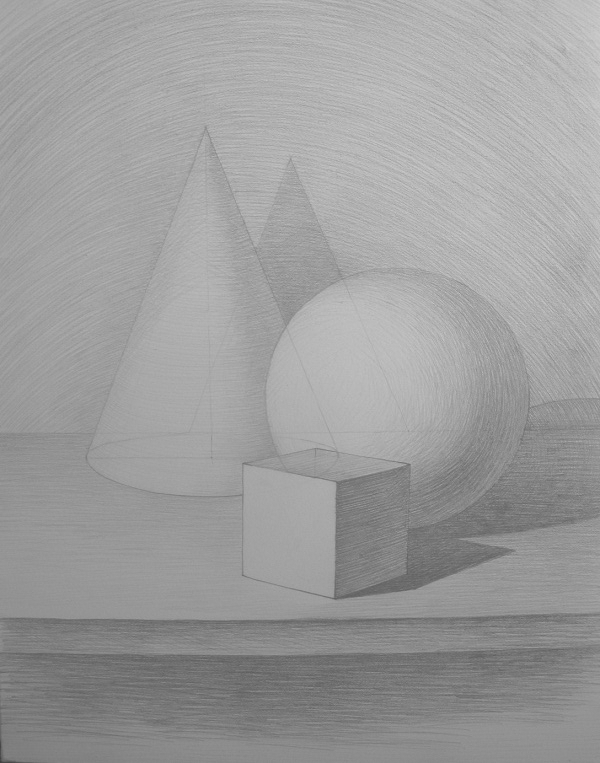
Here's a still life you can get.
Let's analyze a little more. See which side the lighting is on? It is not difficult to determine by the cube. Its side face is the most illuminated. This means that the light source is located more from the side than from the top. That is why the object plane will initially have a tonality that is darker than the wall in the background. The only area is the lightest on the object plane - the closest to us, in front of the cube. There is even a reflex from the white illuminated plane of the cube. But all the same the tonality will be stronger than on this edge of the cube. And the general tone of the object plane will be darker than the tone of the wall. This is how you can "play" with stroke and tone, creating space in the sheet.
By the way, there are reflexes both on the shadow side of the cube and on the ball; they reflect from the object plane. See? But this only adds liveliness and realism to the drawing, and as before, the shadow remains a shadow - the reflex should not have a tonality equal to the tonality of the illuminated surface. When you look at this area for a long time in nature, it may often seem so to you, but in fact you just need to give your eyes a rest, and then look at the whole picture, scattering your eyes and analyzing everything in general.
Now the area closest to us is a break in the object plane, it receives enough light so that it does not make it the darkest, but perhaps we would need to select the area under it (under the table) as the darkest. But we will not do this, since the main action is not taking place under the table. I believe that it is enough how actively the break in the object plane is shown and how much space is allocated in the sheet for the shadow located under it. The importance We have transferred this site and here it is enough. And also notice how the stroke lays down in this place: also, obeying the general structure, the stroke burns the already created mood of the composition with the horizontal direction of the lines. And although our tablet is turned vertically, the figures are also located supporting the vertical, but this character of the stroke does not spoil our verticality, on the contrary, it balances and gives order and static. Everything is balanced, harmonious and gets along well with each other.
This is how we arrange the space in the sheet. Work, you will succeed. Good beautiful still life with geometric shapes is worth a little work on its creation. This is how we gradually learn- how to learn to draw, so that you can then draw whatever you like.